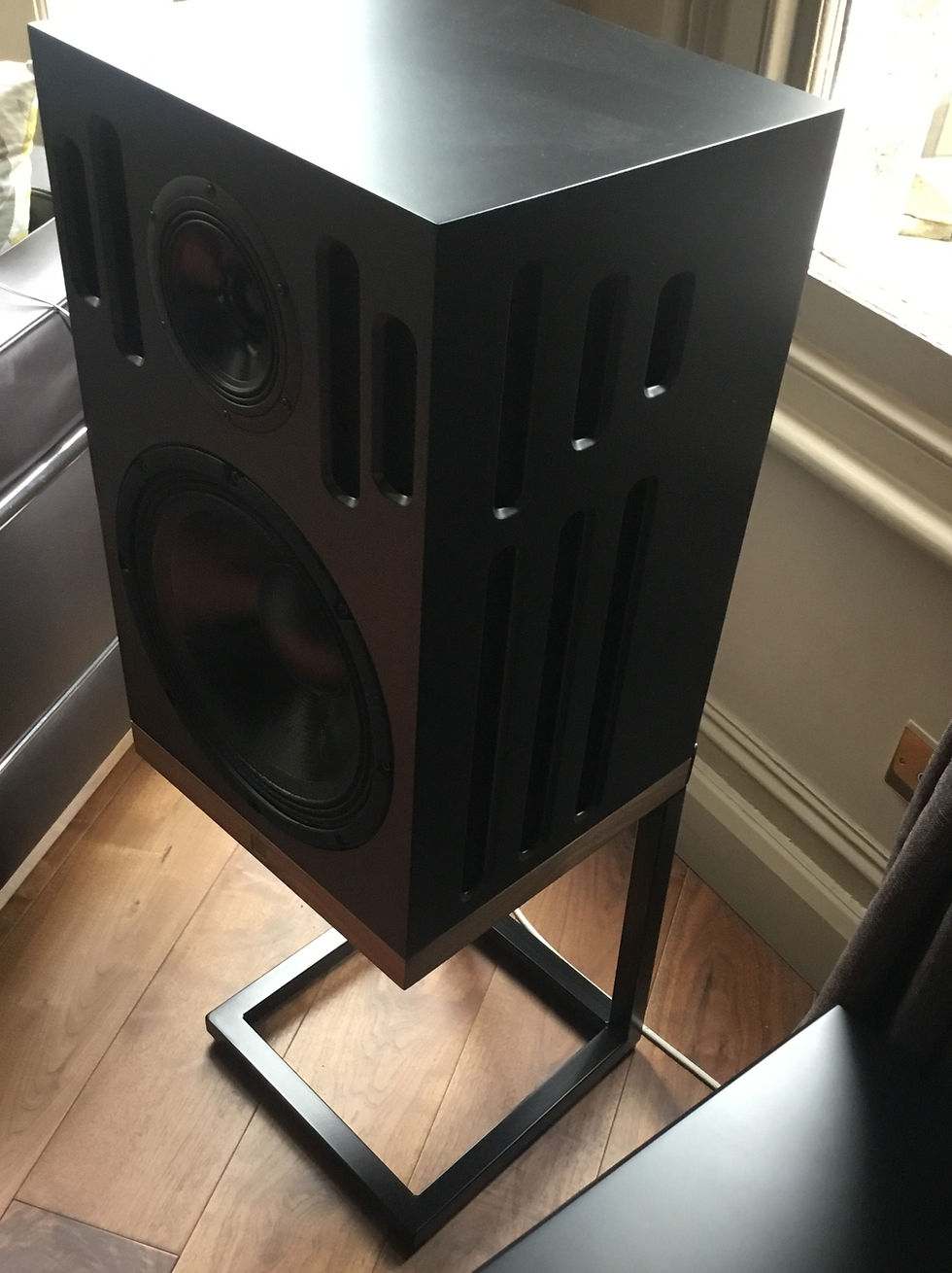Introducing Sigberg Audio,
- Keith Cooper

- Jan 30, 2024
- 4 min read

Sigberg Audio,
I first became aware of Thorbjørn Sigberg and thus Sigberg Audio through the Audio Science Review Forum,
I can't believe anyone hasn't heard of ASR it tends to divide opinion, whether you lean towards objectivism or subjectivism ASR is packed with information, not marketing actual facts and often the brutal and hard to swallow truth.
Thorbjørn had started a thread discussing the development of his new dual cardioid loudspeaker design the 'Manta'.
I first experienced cardioid loudspeaker designs with the Kii Three, the passive Gradient 1.4, MEG Geithains 901 the cardioid response in the MEG speakers is through the bass region, the others through the mids.
Then the superb Dutch&Dutch 8C was released, D&D also made for a time a non-cardioid version their 8M, identical enclosure dimensions but no twin rear 8" bass drivers and no cardioid response.
Directly comparing the 8C and 8M was revealing, REW measurements for the 8C showed a much tidier response particularly through the cardioid region 80Hz and up, the 8Cs also allowed you to hear just that bit more incisively into the mix, everything just a bit clearer.
Cardioid response simply means that the rear projected energy from the driver is slowed and thus cancels its own rear output, which equates to a -24dB reduction in rear output.
This improves the speaker's SBIR ( speaker boundary interference response) effectively just less sound cancelling or reinforcing behind the speaker, the result is that you hear a higher percentage of direct sound which means clearer more transparent reproduction.
In the comparisons/measurements I have made here and in customer's rooms the 8Cs measurements have always been tidier, and the sound simply more transparent.
I remember very well my ( who was to be) very first 8C customer, I set them up next to his large Harbeths, we had been listening for a few minutes swapping between speakers, he asked his partner their opinion and they said , 'those' pointing to the 8Cs 'are clearer and have better bass'.
Which in retrospect was not only absolutely correct but perfectly encapsulated in just a few words the entire purpose of contemporary active designs, which is simply to give you better sound quality working with the room rather than against it.
In my opinion cardioid designs are worth pursuing:-
Thorbjørn reasoned that for really superlative reproduction a loudspeaker had to be four-way, in his designs the main speakers feature a co-axial mid/treble driver and a dedicated mid bass driver, a 12" in the Manta, the main speakers response would only extend down to 80Hz which means that you just must had a subwoofer or ideally two subwoofers.
That in terms of loudspeaker design is a very bold move, particularly when the fashion for the last twenty years has been for smaller and more discrete loudspeakers.
No-one is ever going to refer to the 'Manta' as discrete!
Relieving the mains of bass duties means that THD ( total harmonic distortion ) is way down, and there is almost no limit how loudly the Mantas will play distortion free.
The 'Mantas' are active, and integration with Sigberg's own subwoofers the '10D' and 'Inkognito' are pre-configured, also included are some pre-sets to allow you to adjust the overall balance of the sound to your taste.
The Mantas also have sophisticated PEQ built in.
The speakers design follow the modern concept of constant directivity, which means that the on and off-axis response mirror each other, this just means that the direct sound is not coloured by the reflected sound, all traditional designs have a comparatively ragged off-axis response.
Thorbjørn believes that soundstage or image width and depth is important, and indeed the Mantas project a wide and deep image, he recommends positioning the speakers either parallel with the front wall or with a slight 10 degree toe in, whether the results are due to the Mantas wide dispersion or characteristics of the co-axial driver I cant be sure, but the result is a wide 'sweet spot' recordings depending upon the material have not only width but real depth.
The 'Mantas' have delivered everything that Thorbjørn promised, a hugely dynamic sound with real punch, slam and attack, one never feels there is a limit to the speaker's headroom.
So they are ideal if your listening space is larger then usual or if you sit further away or if you just prefer to play really loudly, in terms of tone and timbre they are completely natural, uncoloured, transparent, their sheer dynamics can be almost threatening.
We ( Purité Audio London) have the Mantas installed here with dual Sigberg D10 subwoofers (twin opposed 10" high excursion bass drivers per subwoofer)
If the D10s are too imposing I have been tremendously impressed with Sigberg's 'Inkognito' pizza box sub.

Each Inkognito subwoofer contains one 12" high excursion driver, they can be positioned either upright as in the photograph above or laid flat with the drive facing downwards like a low table, their versatility makes placement much more convenient, they can even be attached to walls, additional subs can be used to flatten overall response or to ameliorate stubborn cancellations, under these circumstances positioning the speaker above floor height can be advantageous.
We recently took delivery of Thorbjørn's first loudspeaker the SBS.1( the mighty atom of loudspeakers) which have absolutely amazed, more of those another time

.
Keith



Comments